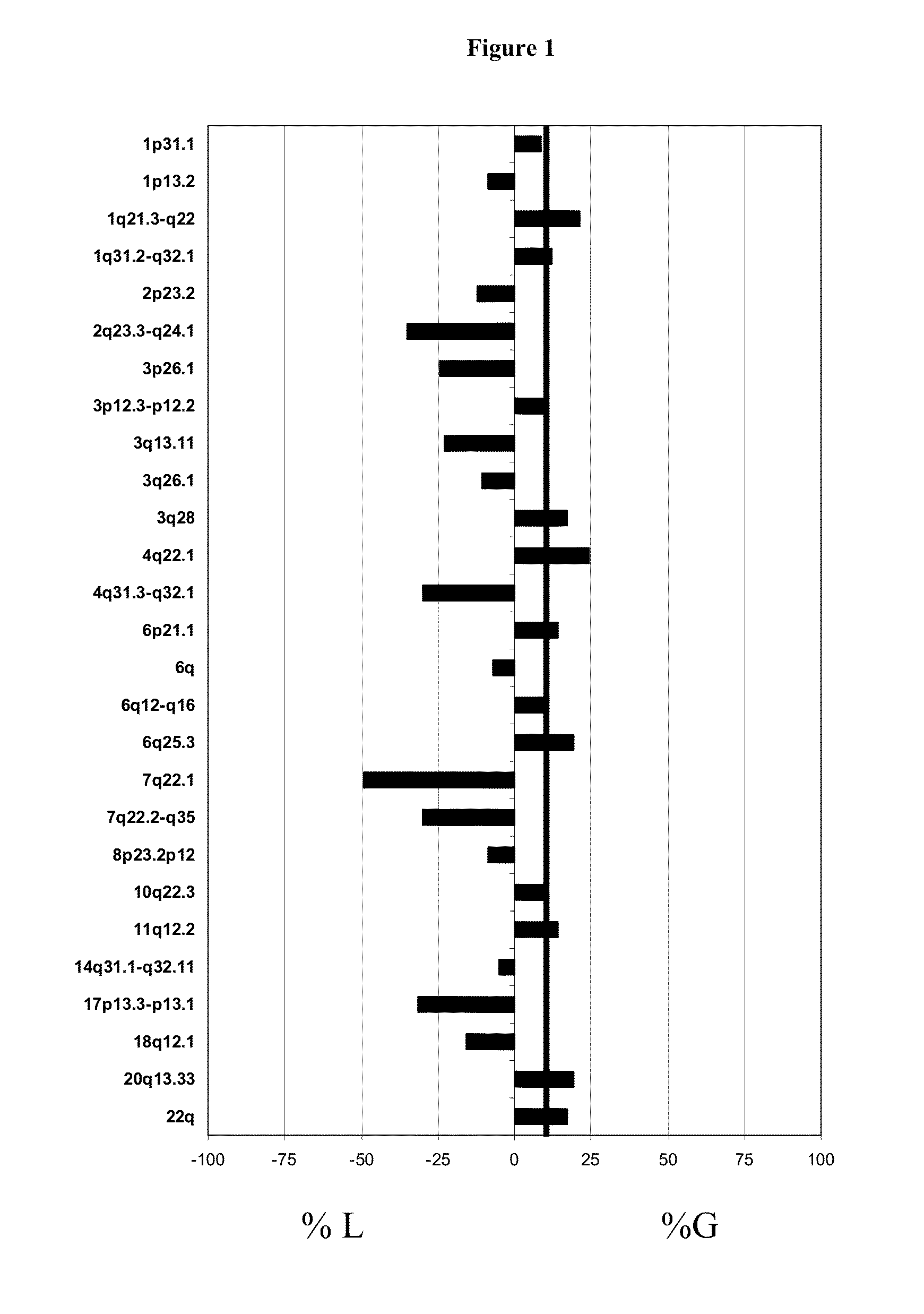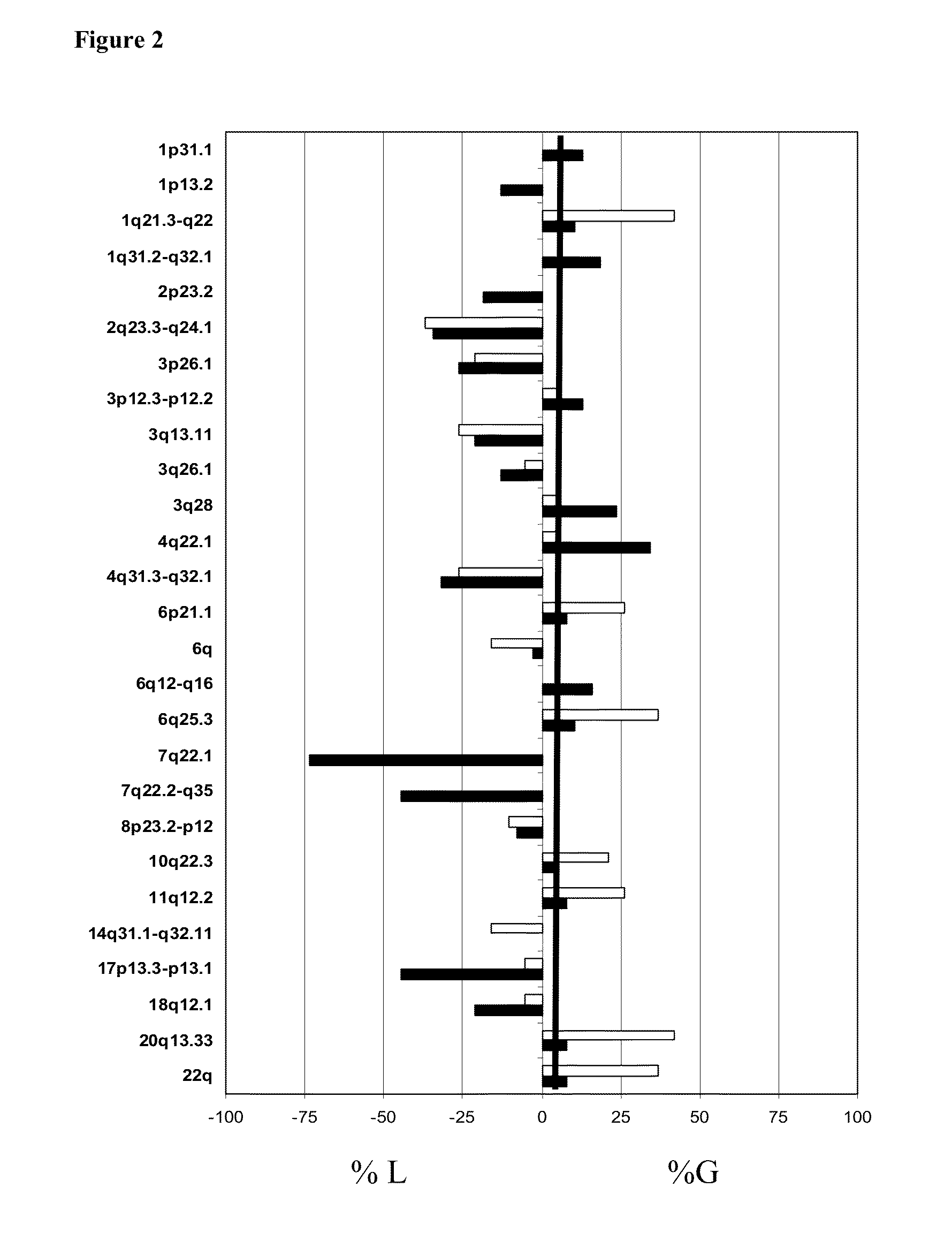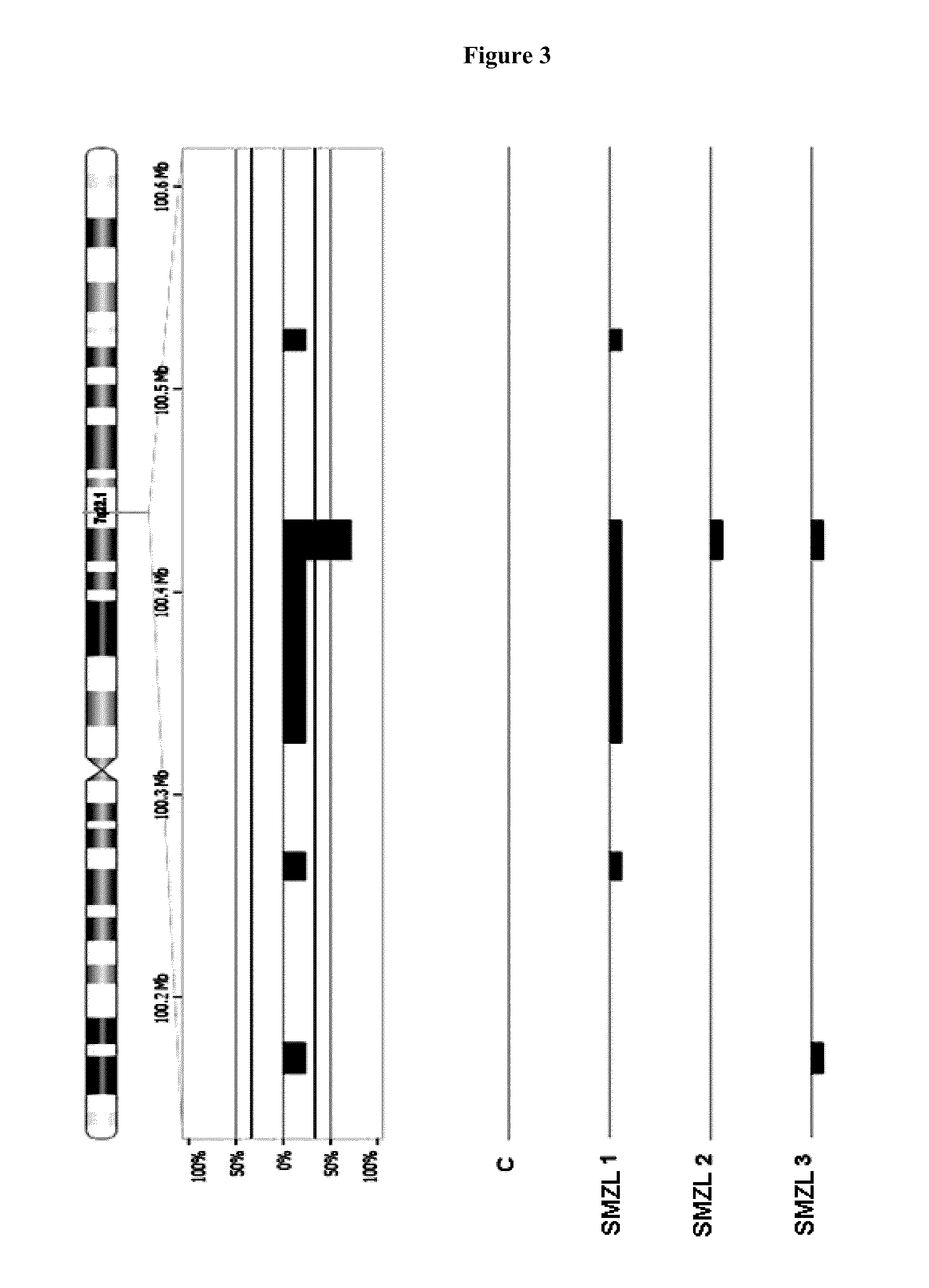In vitro diagnostic method for patients with splenic marginal zone lymphoma
a lymphoma and in vitro technology, applied in the field of biomedicine and pharmacy, can solve the problems of reducing the accuracy of the cgh method, affecting the accuracy of the diagnosis, and unable to determine the exact point of the chromosome,
- Summary
- Abstract
- Description
- Claims
- Application Information
AI Technical Summary
Benefits of technology
Problems solved by technology
Method used
Image
Examples
example 1
DNA Extracted from Samples of SMZL Patients
[0060]To obtain the results shown in the present invention Seventy eight patients with the diagnosis of SMZL were included in this study. The diagnosis was established according to the WHO classification. Thirty six patients (56%) were women. The ages ranged from 44 to 86 years (median 69 years). The study was approved by the local ethical committees. Informed consent was obtained from each patient before entering the study.
[0061]DNA was extracted from spleen samples, lymphoid node, bone marrow aspirate or samples of whole blood provided that the tissues were infiltrated with cells of SMZL. All genomic DNA was extracted from fresh-frozen samples using the standard phenol-chloroform method. In 53 patients, Tumour DNA was isolated from the spleen, bone marrow and peripheral blood. Normal DNA was extracted from the human placenta of healthy donors. All DNA was quantified using the NanoDrop spectrophotometer (ND-1000, NanoDrop Technologies, Wil...
example 2
Characterization of Genomic Imbalances in SMZL by High-Resolution BAC / PAC Array
[0062]After genomic DNA of SMZL patients and Normal DNA from the healthy donors was extracted, a genomic-wide analysis of DNA copy number changes of patients was performed using BAC CGH-array. To confirm the gains and losses assessed by array-CGH was performed FISH analysis.
[0063]In the present stud of SMZL was analyzed using BAC / PAC CGH-array, Agilent CGH-array, NimbleGen CGH-array and by tiling path array specific from chromosome 7
[0064]The first genomic-wide analysis of DNA copy number changes of SMZL patients was performed using BAC CGH-array. This BAC / PAC array contained 3528 bacterial artificial chromosomes (BAC) and PAC (P1-Derived Artificial Chromosome) contains targets spaced at ≈1 Mb density over full genome. Slides were produced at the Centre of Cancer Research (Salamanca, Spain) as previously described. {Robledo, 2009}.Briefly, 2009). Briefly, first we proceeded to the preparation of genomic S...
example 3
FISH Validation of Losses Identified by BAC / PAC CGH-Array
[0071]As methodology confirmation of the results obtained by High-resolution BACIPAC microarray CGH-array, fish studies was performed in a total of 20 patients diagnosed SMZL. By FISH technique can observed by fluorescence microscopy, whether or not a region is deleted, and that the chromosomal region that hybridizes to each of the probes used is duplicate in each of the cells, whether the deleted area is to be noted in cell two signals corresponding to the color with which the fluorophore is labeled the probe. In contrast, if it is deleted, only a single observed color signal corresponding to the fluorophore is labeled the probe.
[0072]In all cases FISH analysis confirmed by the results obtained by CGH-array: 7q deletion To corroborate more specifically those results 8 SMZL patients were selected, three of them showed losses in the region BAC / PAC 7q by CGH-array and five showed no genetic changes in this region. The criteria f...
PUM
| Property | Measurement | Unit |
|---|---|---|
| Density | aaaaa | aaaaa |
| Level | aaaaa | aaaaa |
Abstract
Description
Claims
Application Information
 Login to View More
Login to View More - R&D
- Intellectual Property
- Life Sciences
- Materials
- Tech Scout
- Unparalleled Data Quality
- Higher Quality Content
- 60% Fewer Hallucinations
Browse by: Latest US Patents, China's latest patents, Technical Efficacy Thesaurus, Application Domain, Technology Topic, Popular Technical Reports.
© 2025 PatSnap. All rights reserved.Legal|Privacy policy|Modern Slavery Act Transparency Statement|Sitemap|About US| Contact US: help@patsnap.com



